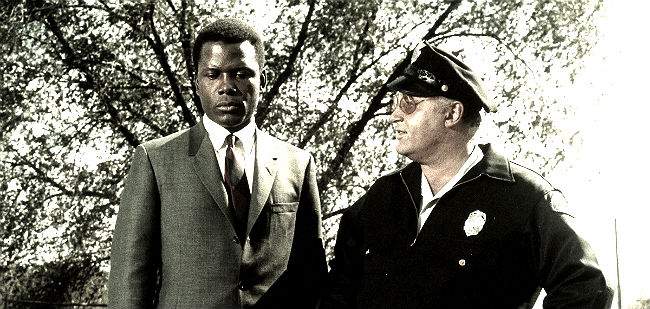 Actor, director, activist, and humanitarian, Sidney Poitier was a pioneer on many fronts: He has been called Hollywood’s first black leading man, and was the first African-American actor to win an Academy Award, in 1963. Poitier emerged as an iconic movie star during the dawn of the civil rights struggle, and during a time when there were few opportunities for black actors or directors in Hollywood. He projected a sense of dignity, moral strength, and determination balanced with cool poise. From April 9 through 17, 2016, Museum of the Moving Image will present a nine-film retrospective of Sidney Poitier.
Actor, director, activist, and humanitarian, Sidney Poitier was a pioneer on many fronts: He has been called Hollywood’s first black leading man, and was the first African-American actor to win an Academy Award, in 1963. Poitier emerged as an iconic movie star during the dawn of the civil rights struggle, and during a time when there were few opportunities for black actors or directors in Hollywood. He projected a sense of dignity, moral strength, and determination balanced with cool poise. From April 9 through 17, 2016, Museum of the Moving Image will present a nine-film retrospective of Sidney Poitier.
The series, Sidney Poitier, is organized by guest curator Mia Mask, Associate Professor of Film at Vassar College, and the co-editor with Ian Gregory Stachan of the new book Poitier Revisited: Reconsidering a Black Icon in the Obama Age (2015, Bloomsbury). Informed by the essays in the book, the film series invites viewers to take a fresh look at Poitier’s career, which is varied and complex, and includes significant work as a director as well as an actor.
Mask will introduce No Way Out, which marked Poitier’s feature film debut in 1950, and Buck and the Preacher, his directorial debut, both screening on the opening day of the retrospective (April 9). The series also includes Edge of the City and Paris Blues, both directed by Martin Ritt;The Defiant Ones, in with Poitier co-stars with Tony Curtis as escaped convicts bound together; the Southern crime story/police procedural In the Heat of the Night; the Broadway hit play by Lorraine Hansberry adapted for the screen, A Raisin in the Sun; and two comedies in the 1970s he directed, Uptown Saturday Night and Let’s Do It Again, which starred a who’s who of African-American comic actors. Most films will be presented in 35mm. The complete schedule and descriptions are included below.
“Sidney Poitier is one of the most significant icons of the 20th century,” said Mask. “He helped to change the American cultural and political landscape by portraying a range of complex, sometimes contradictory, but always dignified characters. He enabled Americans to re-envision black masculinity by deftly negotiating and navigating the color line in American cinema. This retrospective of films is a wonderful opportunity to revisit the relationship between Poitier’s fascinating career and the current political landscape.”
Sidney Poitier was born in 1927 in Miami while his parents were visiting the United States from the Bahamas. Raised in poverty in the West Indies, Poitier became a theater actor after moving to New York City. His stage work began in 1946 on productions as varied as Lysistrata, You Can’t Take It with You, Anna Lucasta, and A Raisin in the Sun, much of it for the American Negro Theater. He made a second Broadway debut, this time as director, with his 1968 production of Robert Alan Arthur’s Carry Me Back to Morningside Heights. Like many New York actors of the day, Poitier appeared on live television during the fabled golden age. By 1950, Hollywood beckoned. His role as a young doctor in Joseph Mankiewicz’s No Way Out set the tone for so many Poitier films to come. The calm center of an ugly hurricane, his performance transcended the racial angles of the script and cut to the universal conflicts and emotions underneath. His ability to work dramatically on all these levels would make him the first black superstar of his generation. In a career spanning 60 years, he has starred in more than 40 films, directed nine, and written four. In addition to the Oscar he won for Best Actor in 1963 for Lilies of the Field, Poitier received an Honorary Academy Award in 2002.
Museum of the Moving Image feted Poitier in 1989 at its fourth annual Salute, and the first one since it opened to the public in 1988. At the event, Poitier noted, “I started my film career where the museum is now housed,” in a short training film called From Whence Help Cometh, in 1949, at the Astoria studio which was then in use by the U.S. Army Signal Corp. For an extensive interview with Poitier, from an event at the Museum in March 1989, visit www.movingimagesource.us/dialogues/view/228
Go to for the schedule: www.usmovingimage.us
Become a Harlem Insider!
By submitting this form, you are consenting to receive marketing emails from: . You can revoke your consent to receive emails at any time by using the SafeUnsubscribe® link, found at the bottom of every email. Emails are serviced by Constant Contact








